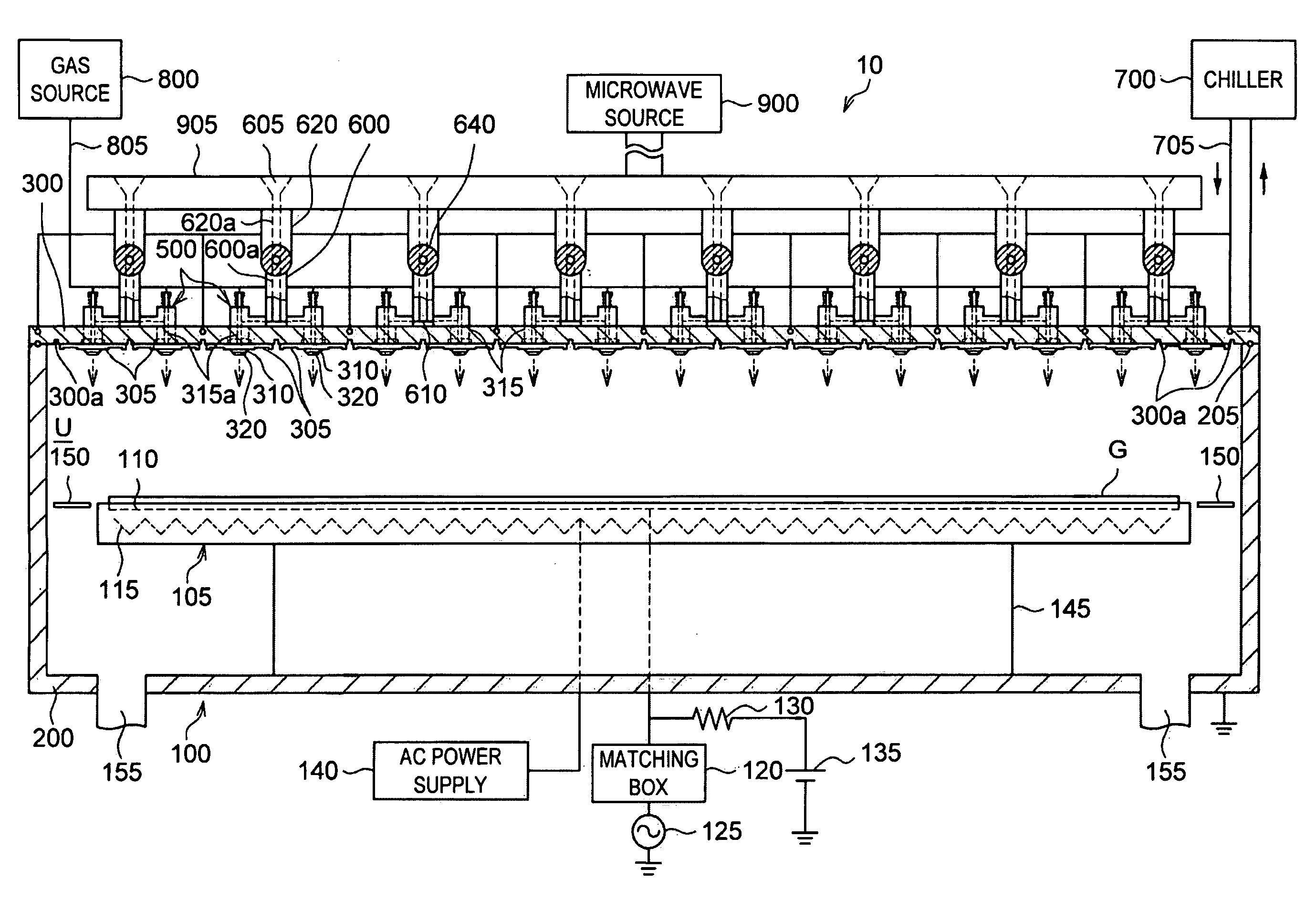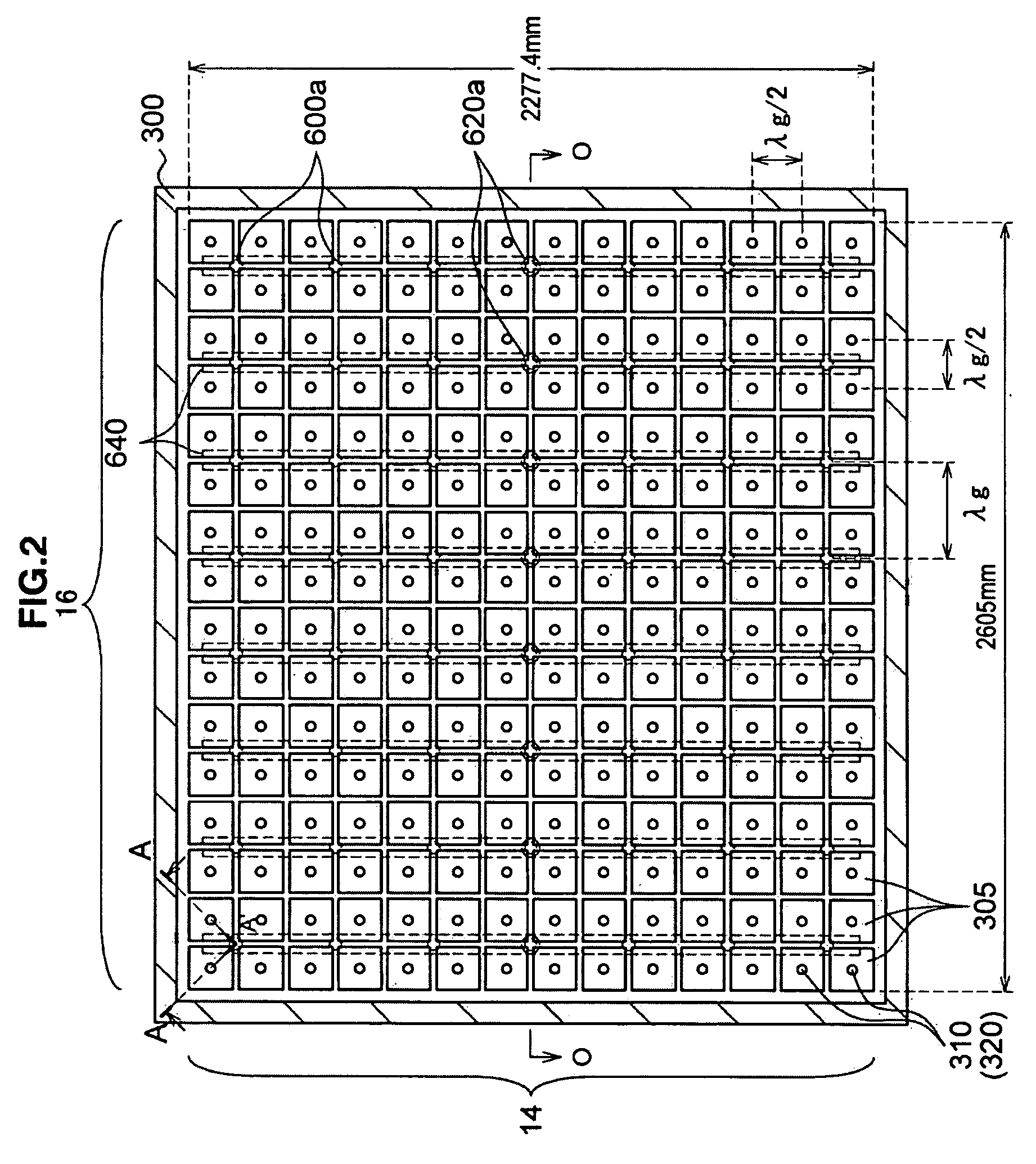Plasma processing system, antenna, and use of plasma processing system
a processing system and plasma technology, applied in the field of plasma processing system, can solve the problems of inability to accurately machine the metal cap and the protection cap, non-uniform and unstable plasma, and possible gaps between plasma and the other sid
- Summary
- Abstract
- Description
- Claims
- Application Information
AI Technical Summary
Benefits of technology
Problems solved by technology
Method used
Image
Examples
first embodiment
Modification of First Embodiment
[0098]Modifications 1 and 2 of the metal electrode 310 of the first embodiment will be described.
modification 1
[0099]The simulation results show that of the exposed portion of the metal electrode 310, the surface parallel to the substrate G induces the electric field concentration. It is thus preferable that the exposed portion of the metal electrode 310 has a shape that does not have a surface parallel to the substrate G. The modification includes, for example, a cone as shown in FIG. 8. The modification may also provide a hemisphere as shown in FIG. 9. The metal electrode 310 in FIGS. 8 and 9 has advantages including a lower cost due to no dielectric cover attached to the electrode 310 and less electric field concentration due to no surface parallel to the substrate G.
[0100]When the exposed portion of the metal electrode 310 has a cone shape as shown in FIG. 8, for example, six gas passages 310a may be provided at regular intervals to introduce the gas down from the gas passages 310a at 45 degrees with respect to the vertical direction. The end of the cone in FIG. 8 may be rounded to reduc...
modification 2
[0104]FIG. 12 shows the cross-sectional view taken along the line X-X in FIG. 11. FIG. 11 shows the cross-sectional view taken along the line Y-Y in FIG. 12. With reference to FIG. 11, the metal electrode 310 has a basal portion that extends into the through-hole 305a of the dielectric plate 305. Additionally, the inner conductor 315a of the coaxial waveguide 315 and the metal electrode 310 are screwed and coupled to each other using a male screw 315d at the end portion of the inner conductor 315a and using a female screw 310b at the basal portion of the metal electrode 310.
[0105]With reference to FIG. 6, which shows the dielectric ring 410 and the O-ring 415b, the O-ring 415b is first fitted in a space and then the dielectric ring 410 is attached. During attaching the dielectric ring 410, it may damage the O-ring 415b. In the structure in FIG. 11, the dielectric plate 305 tapers at the top. The dielectric plate 305 may thus be fitted more smoothly and the dielectric plate 305 may l...
PUM
| Property | Measurement | Unit |
|---|---|---|
| frequency | aaaaa | aaaaa |
| height | aaaaa | aaaaa |
| frequency | aaaaa | aaaaa |
Abstract
Description
Claims
Application Information
 Login to View More
Login to View More - R&D
- Intellectual Property
- Life Sciences
- Materials
- Tech Scout
- Unparalleled Data Quality
- Higher Quality Content
- 60% Fewer Hallucinations
Browse by: Latest US Patents, China's latest patents, Technical Efficacy Thesaurus, Application Domain, Technology Topic, Popular Technical Reports.
© 2025 PatSnap. All rights reserved.Legal|Privacy policy|Modern Slavery Act Transparency Statement|Sitemap|About US| Contact US: help@patsnap.com



